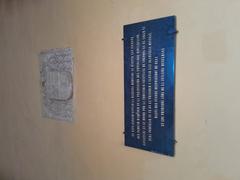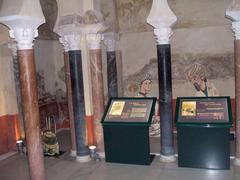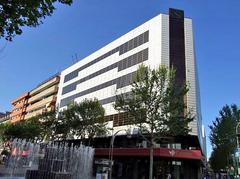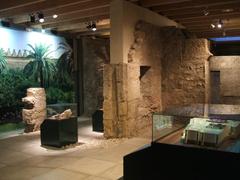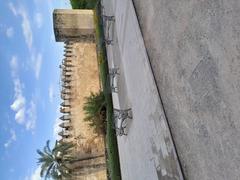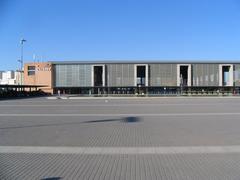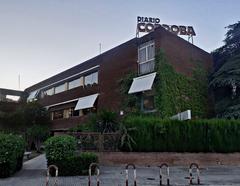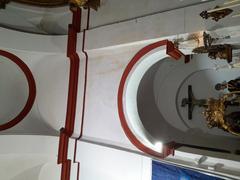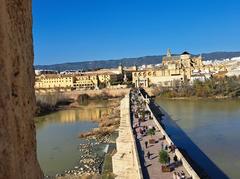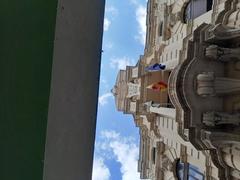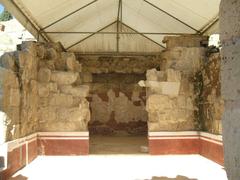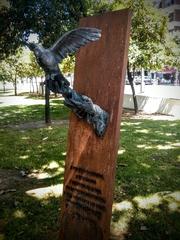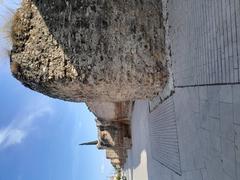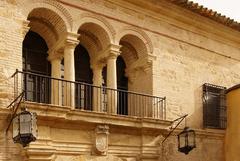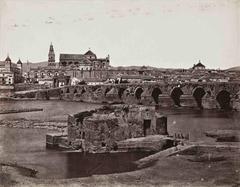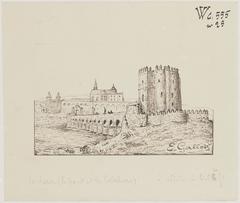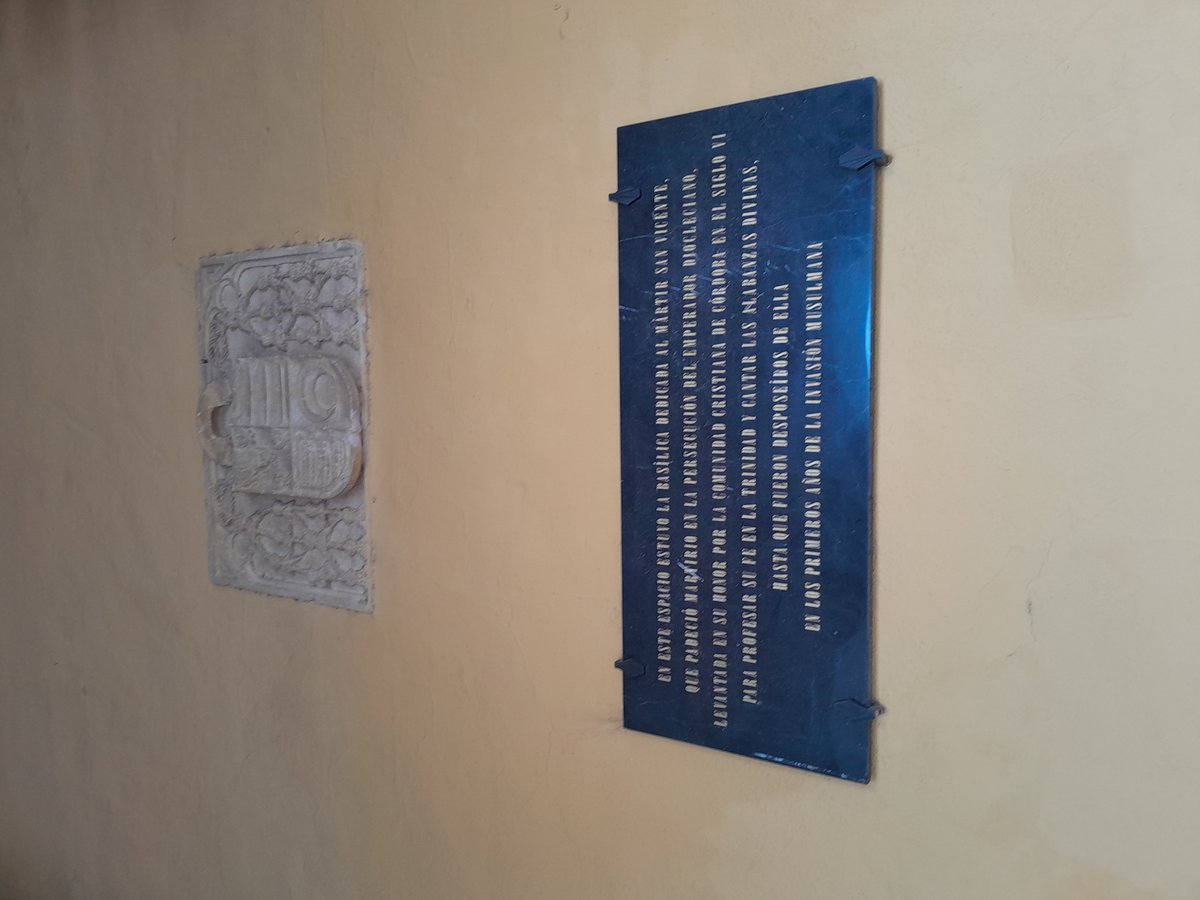
Mosque-Cathedral of Córdoba: Visiting Hours, Tickets, and Historical Sites Guide
Date: 14/06/2025
Introduction
The Mosque-Cathedral of Córdoba—locally known as the Mezquita-Catedral—is one of Spain’s most iconic monuments. Located in the heart of Córdoba, this UNESCO World Heritage Site is a testament to centuries of religious, cultural, and architectural evolution. The monument uniquely blends Islamic and Christian elements, charting Córdoba’s transformation from a Visigothic Christian center to the capital of Islamic al-Andalus and, following the Reconquista, a Catholic stronghold. Today, it stands not just as an architectural marvel but as a symbol of coexistence, cultural dialogue, and artistic achievement (Wikipedia, Mezquita de Córdoba Official Site).
This comprehensive guide provides a detailed overview of the Mezquita-Catedral’s history, architecture, practical visiting information, and insider tips—ensuring you have all you need for a memorable experience.
Historical Overview
Origins and Early Foundations
The site’s history predates Islam, with archaeological evidence suggesting Roman and Visigothic buildings once stood here. Before the 8th century, a Visigothic basilica dedicated to Saint Vincent of Saragossa occupied the site (Wikipedia). After the Muslim conquest of Córdoba in 711 CE, Christians and Muslims reportedly shared the space, underscoring the city’s early spirit of coexistence (The Culture Map).
Umayyad Expansions and Architectural Flourishing
Initial Construction and Growth
- Abd al-Rahman I (785–787 CE): Commissioned the first mosque, incorporating Roman and Visigothic columns and creating the iconic hypostyle prayer hall with double-tiered arches (Identitecture).
- Abd al-Rahman II (833–848 CE): Expanded the mosque southward.
- Al-Hakam II (961–976 CE): Added the ornately decorated mihrab and the maqsura, showcasing intricate Byzantine mosaics (Wikipedia).
- Al-Mansur (987 CE): Extended the mosque eastward, making it one of the largest in the Islamic world with 856 columns and covering more than 23,000 square meters (The Culture Map).
Architectural Features
The mosque is renowned for its “forest” of columns and double arches—red and white voussoirs—creating a mesmerizing sense of infinite space. The mihrab, lavishly decorated with Byzantine mosaics, and the original minaret (now a bell tower) are standout features (Lions in the Piazza).
Christian Reconquest and Transformation
After Córdoba was conquered by King Ferdinand III in 1236, the mosque was consecrated as a Catholic cathedral. Instead of demolishing the mosque, Christian rulers preserved much of its structure.
- 16th Century: A Renaissance nave and choir were introduced into the mosque’s center, an intervention approved by Charles V, who later regretted altering the unique Islamic structure (Mezquita de Córdoba Official Site).
- Subsequent Centuries: Gothic, Baroque, and Renaissance elements—including ornate chapels and altarpieces—were added, resulting in an extraordinary architectural palimpsest (Mezquita de Córdoba Official Site).
Religious and Cultural Significance
During the Caliphate of Córdoba, the mosque was a center of worship, scholarship, and governance, second in importance only to Mecca for Muslims in the West. After its conversion, it became the seat of the Catholic bishop, further symbolizing Córdoba’s history of cultural fusion (Oway Tours).
Architectural Highlights
Visigothic and Roman Foundations
Archaeological traces and reused materials from Roman and Visigothic buildings are found in the mosque’s earliest construction, with some columns and capitals dating back to these periods (Fascinating Spain).
Umayyad Islamic Expansion
Hypostyle Prayer Hall
A vast hall of 856 columns supports double-tiered arches, creating the “forest” effect that is the mosque’s signature (The Viva La Vita).
The Mihrab
This ornate prayer niche, signifying the direction of Mecca, is famed for its horseshoe arch, Byzantine mosaics, and exceptional craftsmanship (The Viva La Vita).
The Maqsura
Next to the mihrab, the maqsura was reserved for the caliph, featuring intricate interlaced arches and geometric decoration.
Minaret and Bell Tower
The original minaret, built by Abd al-Rahman III, is now encased within a Renaissance bell tower. The tower, 54 meters high, offers panoramic views and can be visited for an additional fee (Experience Córdoba).
Christian Modifications
Cathedral Nave and Choir
A Renaissance nave and choir were inserted in the mosque’s center, with soaring vaults and clerestory windows that dramatically alter the original symmetry (Fascinating Spain).
Chapels and Altarpieces
Numerous chapels line the mosque’s perimeter, each representing different artistic periods. The Capilla de Santa Teresa houses the Cathedral Treasure, including the renowned 16th-century Custodia del Corpus Christi (Fascinating Spain).
Patio de los Naranjos
The entrance courtyard is planted with orange trees and features a central fountain, once used for ablutions. It remains a tranquil prelude to the monument’s interior (The Viva La Vita).
Gates and Façades
Distinct gates mark the monument’s exterior, reflecting various historical phases—from the 8th-century Puerta de los Deanes to later Renaissance interventions (Fascinating Spain).
Decorative Elements
- Columns and Capitals: Reused from Roman and Visigothic buildings.
- Mosaics: Especially in the mihrab and maqsura.
- Wooden Ceilings: Some original ceilings survive, adorned with painted motifs.
Lighting and Spatial Experience
The unique interplay of light and shadow, created by the double arches and clerestory windows, contributes to the mosque’s ethereal atmosphere (Euro Weekly News).
Key Statistics
- Total Area: ~24,000 square meters
- Columns: 856
- Bell Tower Height: 54 meters
- Construction Timeline: 786–788 CE (initial mosque), expanded in the 9th–10th centuries, Christian modifications 13th–18th centuries
UNESCO World Heritage Status
In 1984, UNESCO declared the Mosque-Cathedral a World Heritage Site, recognizing it as the most significant example of Islamic architecture in the Western world and a symbol of cultural syncretism (Euro Weekly News).
Visiting the Mosque-Cathedral of Córdoba: Hours, Tickets & Practical Information
Opening Hours
- Monday to Saturday: 10:00 AM – 6:00 or 7:00 PM (varies by season)
- Sundays/Holidays: 8:30 AM – 11:30 AM (worshippers), 2:30 PM – 6:00 or 7:00 PM (visitors)
- Bell Tower: 9:30 AM – 6:30 PM (last entry at 6:00 PM)
- Free Entry: 8:30 AM – 9:30 AM, Monday to Saturday
Always check the official site for current times, as schedules may change for religious events.
Ticket Prices and Where to Buy
- General Admission: €11–13 for adults
- Reduced Admission: €5–6 for EU citizens (18–25 years), students, and seniors
- Children: Free for under 10 years old
- Residents & Disabled Visitors: Free entry for Córdoba residents and visitors with certain disabilities
- Bell Tower: Additional €3
- Combined and Guided Tours: Prices vary; standard guided tours start at €24 (Amused by Andalucia)
- Purchase: Online via official website, mezquitadecordobatickets.com, or on-site (expect queues during peak times)
Accessibility
- Step-free entrance at Calle de Torrijos
- Adapted restrooms
- Most of the site is accessible, though the bell tower is not suitable for those with limited mobility
Visitor Guidelines
- Dress modestly (shoulders and knees covered)
- Photography (without flash) is allowed; no tripods or selfie sticks
- Silence is observed during religious services
- Travel light; cloakroom is limited
Guided Tours and Special Experiences
- Standard Tours: 1–1.5 hours, in-depth historical context
- Night Tour (“Soul of Córdoba”): Special illumination, limited groups, advanced booking required (The Viva La Vita)
Facilities and Amenities
- Audio guides in multiple languages
- Gift shop near the exit
- Nearby cafés and restaurants
- Limited cloakroom service
Getting There
- By train: AVE high-speed trains from Madrid, Seville, Málaga; 20-minute walk from station (Drone & DSLR)
- By bus: Local lines 3 and 12 stop at Puerta del Puente
- By car: Limited parking in the historic center; use nearby public lots
Nearby Attractions
- Roman Bridge
- Alcázar de los Reyes Cristianos
- Jewish Quarter
These sites are within walking distance and offer a comprehensive glimpse of Córdoba’s multicultural heritage.
Frequently Asked Questions (FAQ)
Q: What are the best times to visit?
A: Early morning (especially during the free entry hour) and late afternoon to avoid crowds.
Q: Can I buy tickets online?
A: Yes, via the official website or recognized third-party vendors.
Q: Is the bell tower accessible to all?
A: The bell tower requires climbing stairs and is not suitable for those with mobility impairments.
Q: Are guided tours recommended?
A: Yes, they provide valuable historical and architectural insights.
Q: Is photography allowed?
A: Yes, non-flash photography for personal use is allowed.
Q: How long does a visit take?
A: Most visitors spend 1–1.5 hours; guided tours may take longer.
Essential Tips for Visitors
- Book tickets in advance, especially during peak seasons.
- Dress appropriately for a place of worship.
- Consider a guided tour or audio guide for a richer experience.
- Combine your visit with other historic sites in Córdoba.
- Download the Audiala app for audio tours and visitor updates.
Summary and Final Recommendations
The Mosque-Cathedral of Córdoba offers a unique journey through the religious and artistic history of al-Andalus and Christian Spain. Its remarkable architecture—from the mesmerizing arches of the prayer hall to the Renaissance nave and tranquil Patio de los Naranjos—makes it one of the most important historical sites in Europe. Practical visitor facilities, accessible entrances, and a variety of tours ensure that all travelers can appreciate this living monument. Check current hours and events on the official website and plan ahead for a seamless and memorable visit.
For additional travel inspiration, explore related articles on Córdoba’s historic sites, download the Audiala app, and follow us on social media for the latest updates and exclusive content.
Sources and Further Reading
- Mosque-Cathedral of Córdoba, Wikipedia
- History of the Cathedral-Mosque of Córdoba, Mezquita de Córdoba Official Site
- Cordoba’s Mosque-Cathedral: Spain’s Best-Kept Architectural Marvel, Euro Weekly News
- Visiting the Mezequita Cathedral in Córdoba, The Viva La Vita
- Mosque-Cathedral of Córdoba: History, Architecture, and Visitor’s Guide, Identitecture Blog
- Practical Visitor Information, Salut Bye Bye
- Why Is the Mosque-Cathedral of Córdoba So Important?, Oway Tours
- Mezquita-Catedral de Córdoba Official Website
- Fascinating Spain: Mosque-Cathedral of Córdoba
- Mosque-Cathedral of Córdoba, Experience Córdoba
- Mosque-Cathedral of Córdoba Tickets, Amused by Andalucia
- Visiting the Mosque-Cathedral of Córdoba, Drone & DSLR
- The Mosque-Cathedral of Córdoba, Must See Spain
- Mosque-Cathedral of Córdoba, mezquitadecordobatickets.com
- Cathedral-Mosque Córdoba, Cordoba Mezquita
